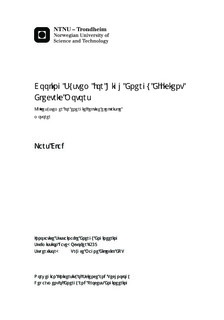Cooling System for High Energy Efficient Electric Motors: Kjølesystemer for energieffektive elektriske motorer
Master thesis
Permanent lenke
http://hdl.handle.net/11250/235401Utgivelsesdato
2013Metadata
Vis full innførselSamlinger
Sammendrag
The development of an efficient cooling system for an axial magnetic flux machine was the subject of the presented master thesis. Throughout the study, an experimental model was designed which offers the possibility to investigate the cooling performance of the presented cooling system in dependence of various design parameters. The model was designed in a way that the coil element which is embedded in the geometry is interchangeable which enables the testing of different stator layouts and coil materials with the presented model. In addition to the experimental setup, a numerical simulation model was created, allowing the comparison between the obtained results. For this simulation model a thorough study of the influence of the mesh size parameters in different regions on the resulting solution quality was carried out. With the presented experimental model, the performance of the developed cooling system was investigated and subsequently compared to the results obtained from numerical simulations. The deviation between the simulated and measured values were marginal and demonstrated that the developed cooling system fulfills all demands that were set.By the experimental and numerical investigation, additional design parameters which showed to be of great importance were identified besides the ones that were studied in detail with an analytical heat transfer model. Also the analytical model was compared to results from numerical simulations. Based on the fact that both numerical simulation setups were modeling the heat transfer problem using the same physical models and showed good accordance to the corresponding analytical and experimental results, it was concluded that the analytical model and the 2D-simulation model deliver reliable results for the average surface heat transfer coefficient for laminar flow regimes. Based on the outcomes of the thesis, possible ways to further improve the performance of the presented cooling system were outlined and recommendations for future work were given.
